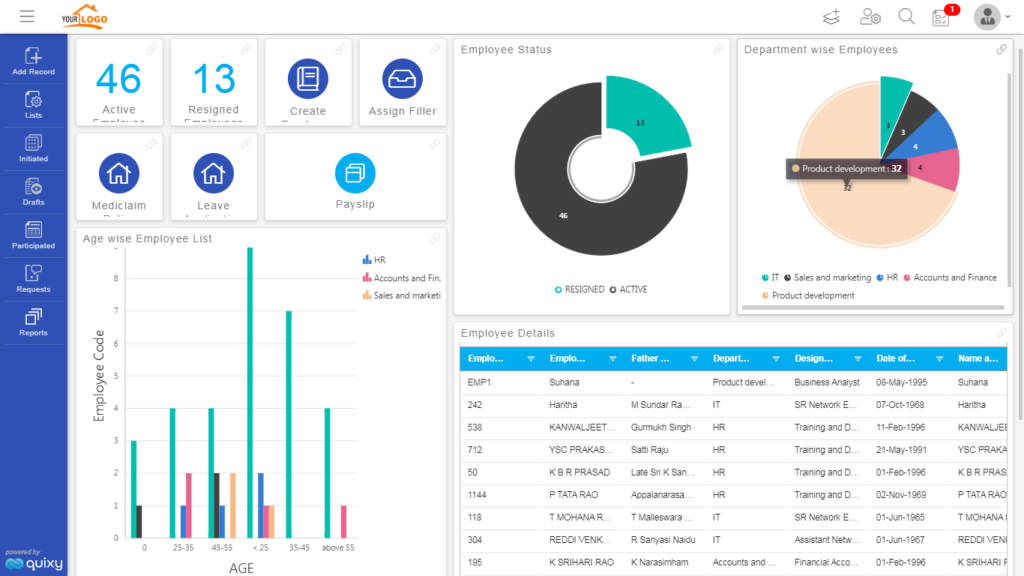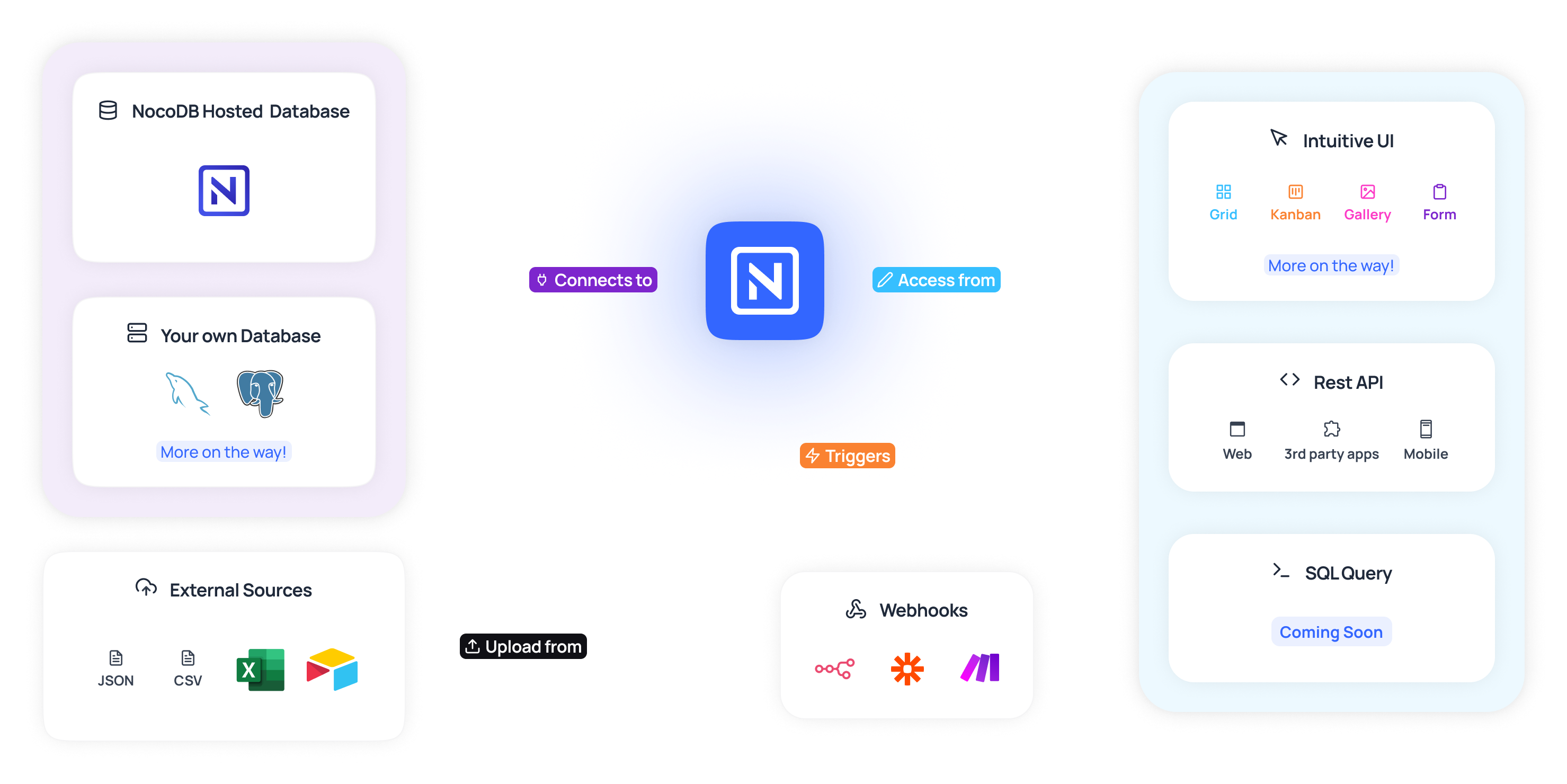Just How No-Code Devices Simplify Open System Data Source Production for Every Person
Just How No-Code Devices Simplify Open System Data Source Production for Every Person
Blog Article
Exploring the Benefits of Scalable Databases That Call For No Coding Skills for Efficient Information Management Solutions
The introduction of scalable databases that get rid of the necessity for coding skills provides a transformative opportunity for organizations seeking efficient data administration solutions. As we consider the ramifications of such innovations, it ends up being essential to analyze how they can reshape the landscape of information administration and drive lasting development in a competitive setting.
Improved Ease Of Access for Users
Enhanced access for users is a crucial element of scalable data sources, making sure that data monitoring systems are easy to use and intuitive. In an age where data-driven decisions are extremely important, availability enables a wider array of individuals, consisting of those without considerable technological experience, to involve with database systems successfully. This democratization of data gain access to facilitates enhanced partnership throughout departments, empowering staff members to make and remove insights notified choices.
Straightforward interfaces, such as visual data and drag-and-drop attributes depiction, simplify intricate data communications. These improvements minimize the discovering curve linked with conventional data source administration, making it possible for customers to concentrate on leveraging data instead of coming to grips with technical complexities. Scalable data sources usually integrate real-time analytics and personalized control panels, providing customers with instant insights tailored to their details demands.

Cost-Effectiveness and Resource Savings
Reliable information management not only pivots on access yet likewise on cost-effectiveness and source savings. Scalable databases designed for users without coding skills dramatically minimize economic problems generally associated with traditional data source administration systems. By removing the need for specialized programs expertise, organizations can assign their sources extra efficiently, concentrating funds on core business activities rather than extensive training or employing skilled employees.
Furthermore, these databases frequently utilize cloud-based remedies, which better reduce prices connected to equipment and maintenance. Organizations can scale their data source remedies according to their requirements, preventing the costs incurred from over-provisioning sources. This flexibility indicates services can adapt to transforming demands without sustaining unneeded prices, bring about considerable long-lasting financial savings.
Additionally, easy to use interfaces enhance data entry and management processes, decreasing the time invested on management jobs. This effectiveness translates right into labor cost savings, allowing groups to focus on critical initiatives rather than regular maintenance. Overall, taking on scalable databases that require no coding skills promotes a much more cost-efficient strategy to information monitoring, enabling organizations to optimize their resources while keeping high levels of operational effectiveness.
Improved Partnership Throughout Teams

Furthermore, scalable databases assist in seamless interaction amongst staff member. With straightforward user interfaces that need no coding abilities, staff members can conveniently create, change, and share records or control Check This Out panels tailored to their details needs. This democratization of data empowers non-technical individuals to contribute insights, this content boosting the collaborative environment.
In addition, these data sources sustain simultaneous accessibility, allowing numerous users to service the same dataset at the same time. This function enhances efficiency, as teams can participate in joint data evaluation without the threat of variation control concerns. The capability to leave notes or comments straight within the data source additionally advertises dialogue and clarifies data analyses.
Streamlined Data Monitoring Processes
In today's data-driven environment, organizations recognize the necessity of structured information administration processes to maximize performance and accuracy. By leveraging scalable data sources that need no coding abilities, companies can streamline their information handling and minimize the intricacies normally connected with standard database systems. This availability empowers non-technical individuals to involve directly with information, helping with quicker decision-making and minimizing dependence on specialized IT employees.
Streamlined data management processes enhance workflow by automating routine tasks such as information entry, recognition, and coverage. Automated information combination makes sure that info from different resources is accumulated seamlessly, removing silos and fostering a merged view of vital organization metrics (no-code). User-friendly interfaces allow employees to manipulate information conveniently, enabling them to generate insights that drive critical campaigns without the need for comprehensive training.
This performance not just increases functional procedures but likewise reduces the potential for human error, guaranteeing that information remains trustworthy and accurate. Inevitably, structured data administration procedures with scalable databases lead to improved performance, permitting organizations to concentrate on core activities while making certain that their data monitoring techniques are reliable and effective.
Scalability for Growing Organizations

For expanding ventures, the ability to scale up or down is important. A scalable database can manage an influx of data generated from brand-new clients, products, or solutions, guaranteeing that company procedures remain uninterrupted. Additionally, these databases provide the capability to handle peak loads effectively, which is essential during durations of fast development or seasonal spikes.
Furthermore, several scalable data source options are created with user-friendly interfaces that call for no coding skills, check my blog empowering non-technical team to manage data efficiently (no-code). This democratization of information administration permits organizations to allocate sources strategically and lower dependency on specialized IT personnel
Ultimately, embracing a scalable data source not only enhances operational performance but also fosters a setting where businesses can advance and introduce without the constraints of conventional database systems. This versatility positions organizations for long-term success in today's competitive landscape.
Verdict
In verdict, scalable databases that call for no coding skills provide substantial advantages for efficient data management. By improving data monitoring processes and providing scalability for growing organizations, such options make it possible for companies to adjust to changing needs properly.
Enhanced accessibility for individuals is a crucial aspect of scalable data sources, ensuring that information management systems are easy to use and user-friendly.Easy to use interfaces, such as visual data and drag-and-drop features representation, streamline complicated information interactions. Overall, adopting scalable databases that require no coding abilities fosters an extra cost-efficient technique to data monitoring, allowing organizations to optimize their resources while preserving high degrees of operational performance.
By leveraging scalable data sources that call for no coding skills, services can simplify their data handling and reduce the intricacies generally connected with traditional data source systems - no-code.Structured data monitoring procedures improve workflow by automating routine jobs such as information access, validation, and coverage
Report this page